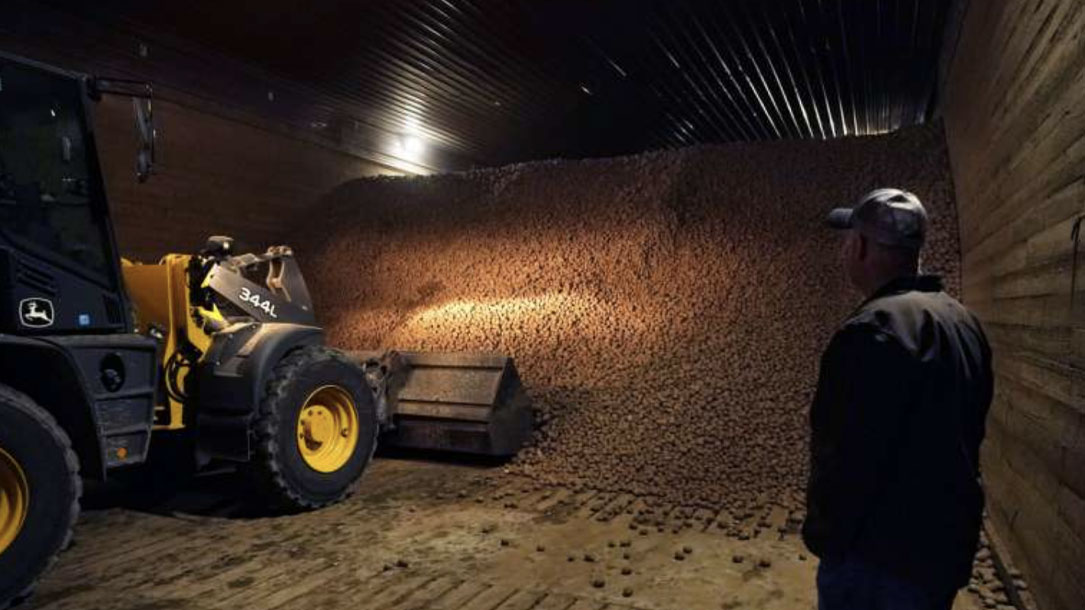
New problems arise for crop storage as planet gets warmer
“There’s a big disconnect in our minds about the chain of events between the field and the grocery store and onto our plate,” [plant physiology scientist Courtney Leisner at Auburn University] said. “Just a few degrees can make all the difference in whether it’s economical to store the fruits and vegetables that we expect to have on our dinner table 365 days a year.”
Aside from potentially higher prices, climate change may worsen food shortages caused by spoilage. About 14% of food produced globally—and 20% of fruits and vegetables—goes bad between harvest and retail, according to the United Nations Food and Agriculture Organization. Wasted food is a significant source of greenhouse gases…

A new vision for farming: chickens, sheep, and…solar panels
Agrivoltaics doesn’t just include chickens. Other livestock can also roam around solar panels, and some researchers are experimenting with planting crops, too.
Animals that graze around solar fields offer several benefits, proponents of agrivoltaics say. Not only does their manure enrich the soil, their munching keeps plants from growing too tall and shading the panels. Another win: they lower vegetation maintenance costs, reducing the need for lawn mowers or landscapers…
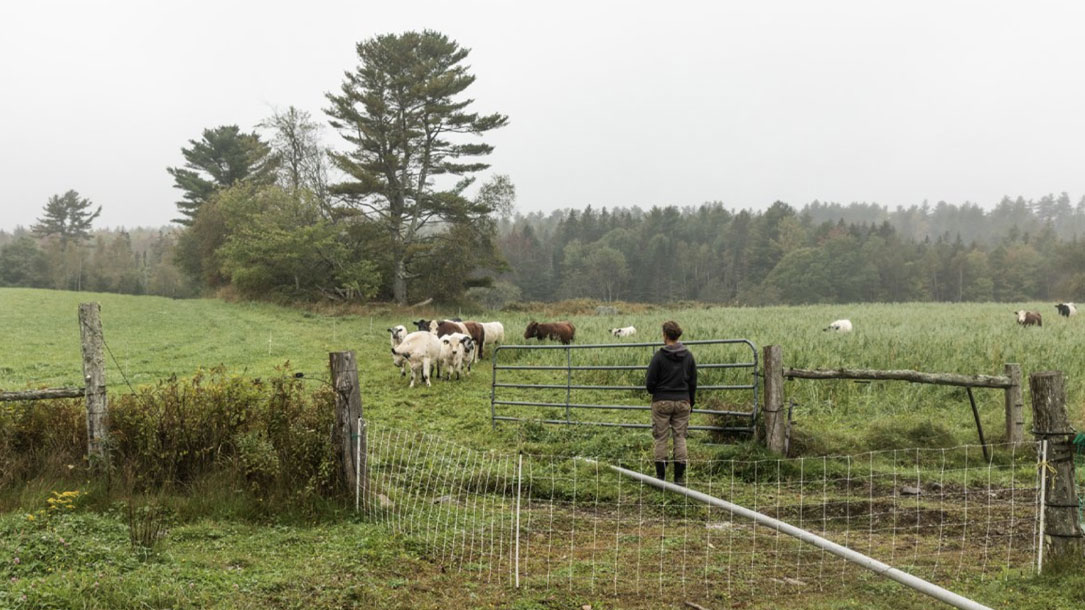
Maine farmers struggle with new, harsher climate reality
Tom Drew thought he’d seen it all. A dairy farmer of 30 years in Woodland, Maine, Drew has weathered an awful lot of change. On an overcast, chilly day last fall, he rested in his milking parlor.
As he leaned his large frame on the metal table, he recounted the history of the farm, his family’s attachment to the old jack pines out front. Like many small and medium-scale dairy farmers, remaining profitable is a challenge for Drew, and every day feels uncertain…
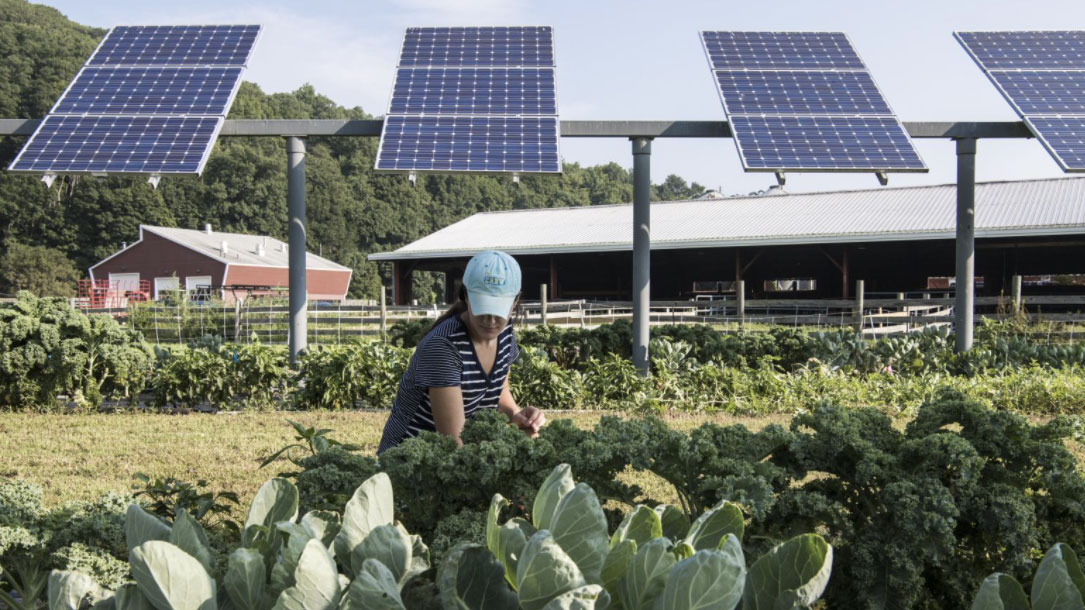
Benefits of agrivoltaics across food, water, energy sectors
Food and energy security need not be competing objectives. In fact, taking a holistic, integrated approach to food-energy-water decision making can increase resiliency of both food and energy systems…
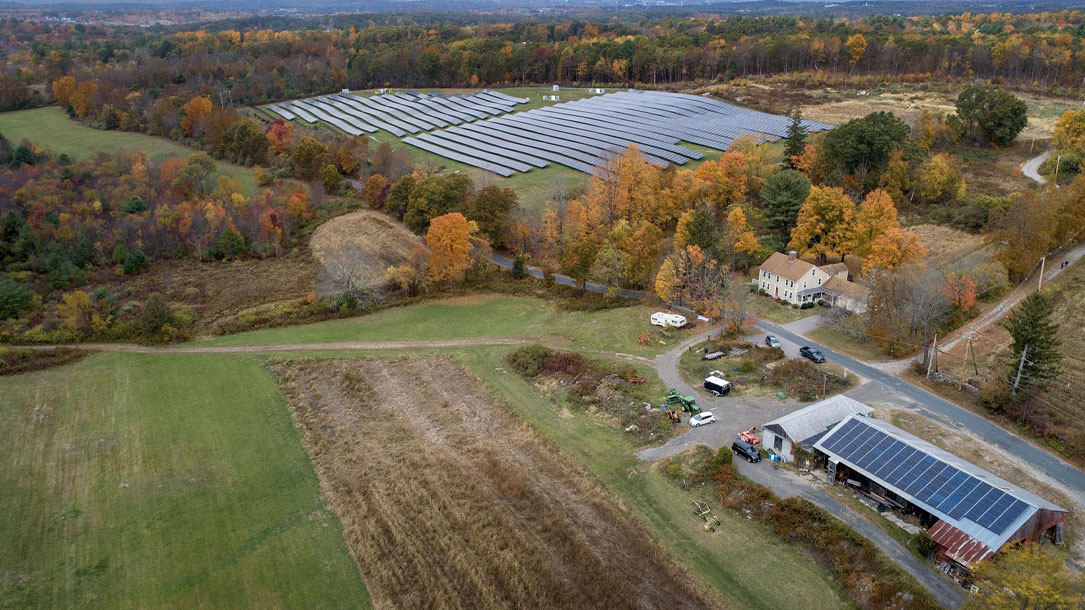
Farms will harvest food and the sun, as Massachusetts pioneers ‘Dual-Use’ Solar
Fickle weather and fluctuating prices make farming a risky business, so five years ago, [Paul] Knowlton installed a new cash crop: solar energy. He turned 19 acres into two solar energy fields. “Doing the solar was very beneficial,” he says. “In the wintertime there is no revenue for a farm. It’s a tough game.”
Knowlton wants to increase the production of solar power on his farm, expanding it to another 14 acres. But this time, cutting-edge technology is making it possible to harvest both the sun’s energy and crops on the same land. It’s called “agrivoltaics” or “dual-use solar”…Knowlton has nine children, and hopes solar will help the farm stay in the family. “We’re going to keep it for the next generation to enjoy,” he says.
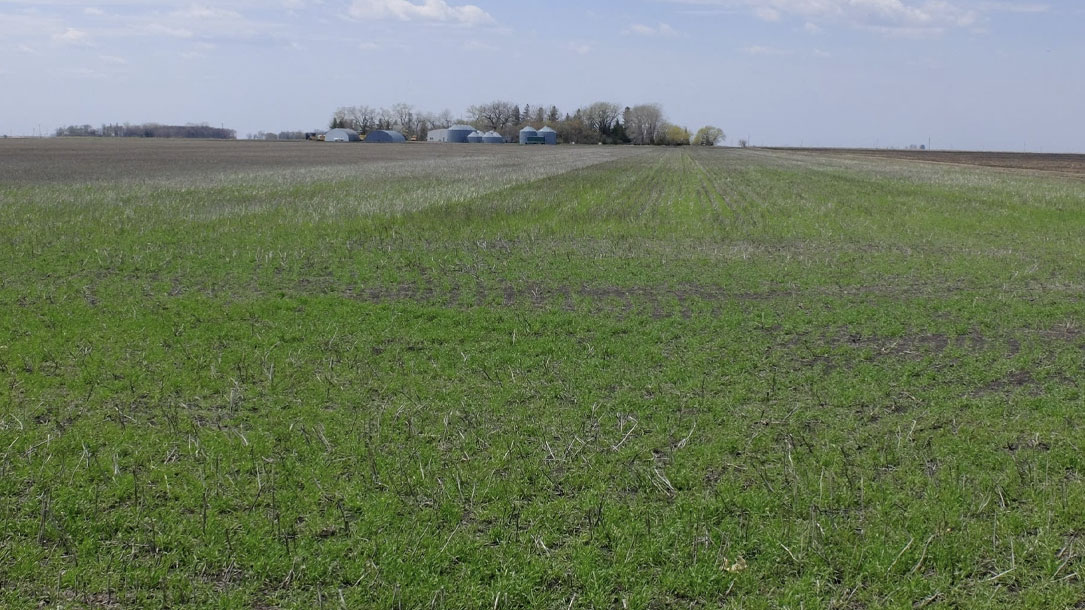
A ‘carbon bank’ could mean extra cash for Midwest farmers
A well-known Minnesota agribusiness hopes to turn climate change concern into cash for farmers.
Land O’Lakes, through its sustainability arm, Truterra, last week launched a carbon exchange program in which companies that want to reduce their greenhouse gas emissions can buy credits, and farmers get paid for increasing carbon storage in the soil…

Video: Solar shading for dairy cows
We all know Minnesota summers can be hot, especially for our grazing dairy herd. We’ve installed solar panels in our pasture to provide shade for our cows. Brad Heins, WCROC dairy scientist, and Kirsten Sharpe, graduate student, share more information…

Solar panels provide cow comfort
Research from the University of Minnesota on solar panels at dairy farms is leading to some interesting results. The panels produce electricity to run the farms, but also provide shade for the dairy cattle—thus improving cattle comfort.
A 30-kilowatt solar-powered system is in the pasture of the rotational grazing system at the West Central Research and Outreach Center. The center is located in Morris, Minnesota. According to University of Minnesota assistant professor and Extension Organic Dairy Management Specialist Brad Heins, the system provides shade for the center’s milking herd and energy for the milking parlor…
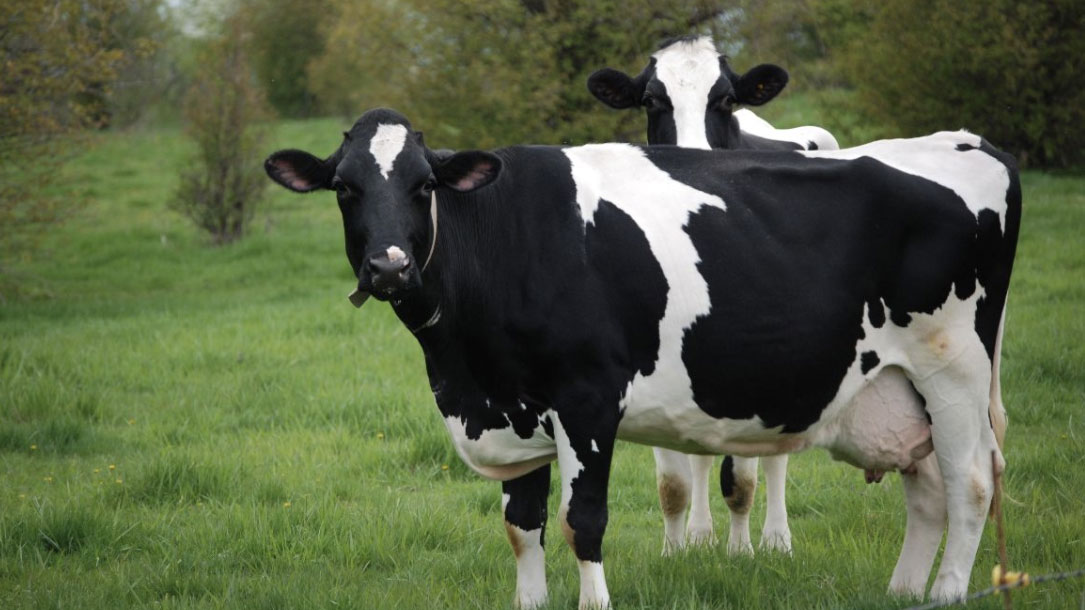
Caring for the land is caring for ourselves
Profitable farms cultivating healthy people; thriving, diverse communities; clean water, flood reduction, stable climate, and biodiversity are possible…

‘Grassland 2.0’ seeks to transform Upper Midwest agriculture through perennial grasslands
Bert Paris loves dairy farming. After more than 30 years, he’s beginning to transition the farm he operates near Belleville, Wisconsin, to his daughter, Meagan Farrell, who is excited about moving her family home to run it.
Despite years of terrible headlines about the dairy industry, farmers like Paris and Farrell are bullish on dairy because, despite chronically low and erratic milk prices, they’ve controlled their production costs with managed grazing. “Grazing, financially speaking, was the best thing I’ve ever done for my business,” Paris says.
Paris is a participant in Grassland 2.0, a newly formed collaborative group based at the University of Wisconsin–Madison that is working to create more opportunities for grazing and other types of perennial grassland farming.












